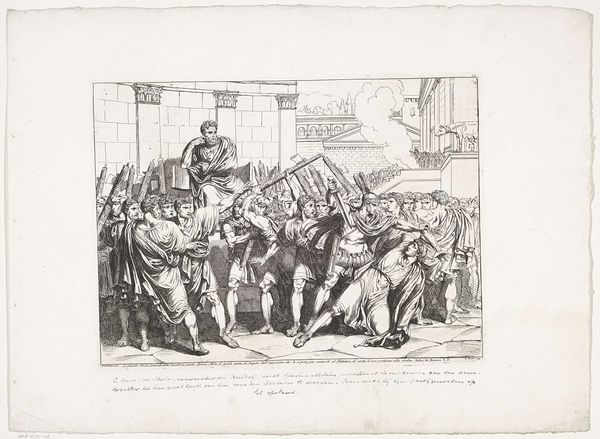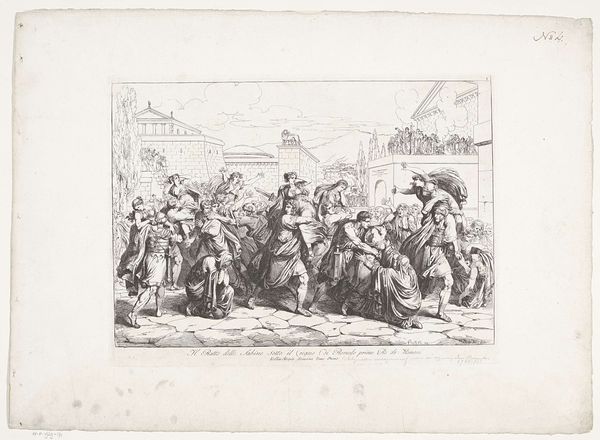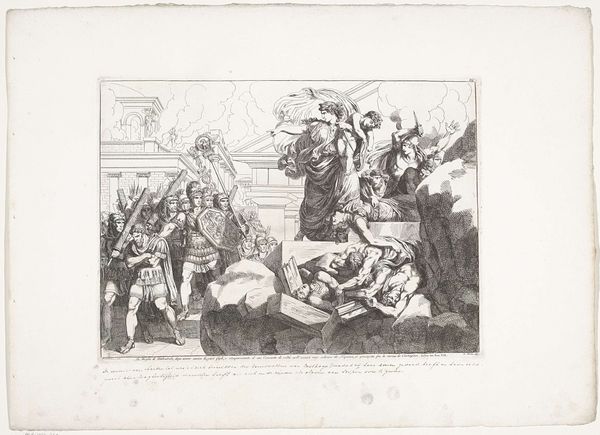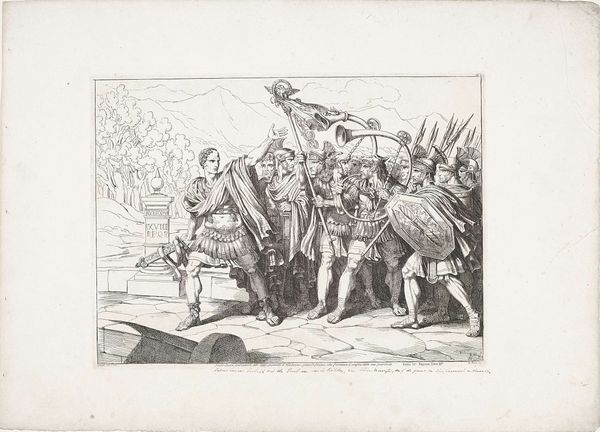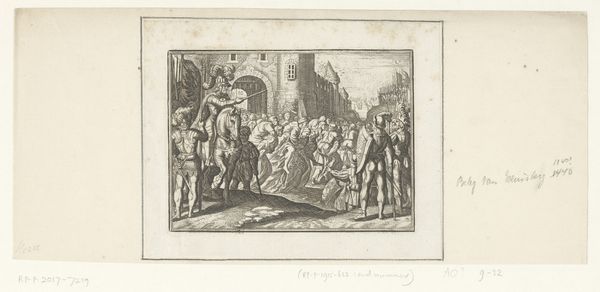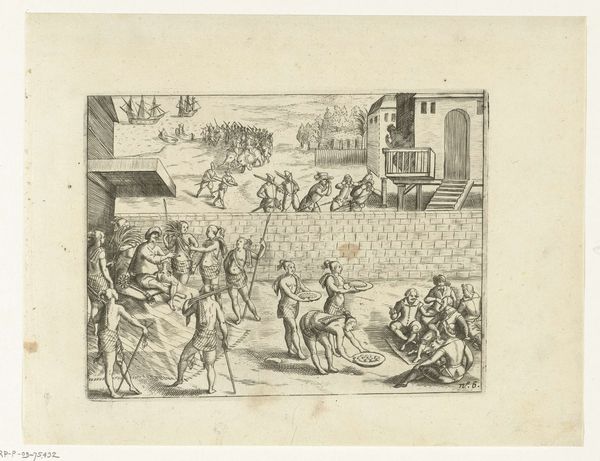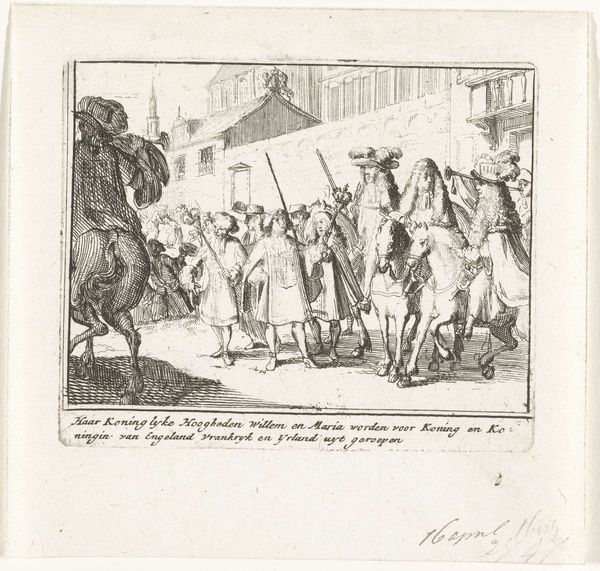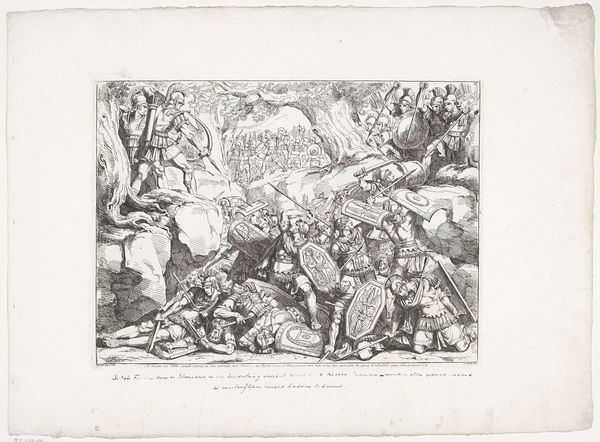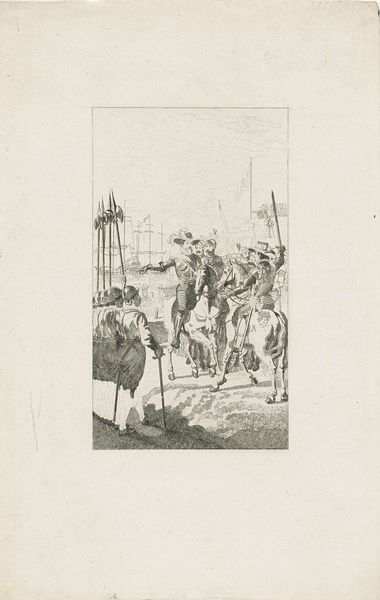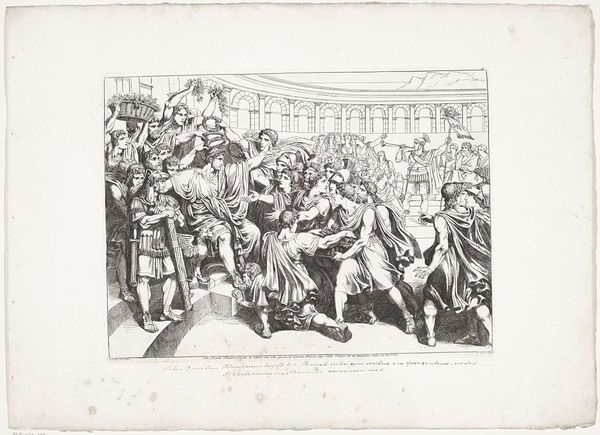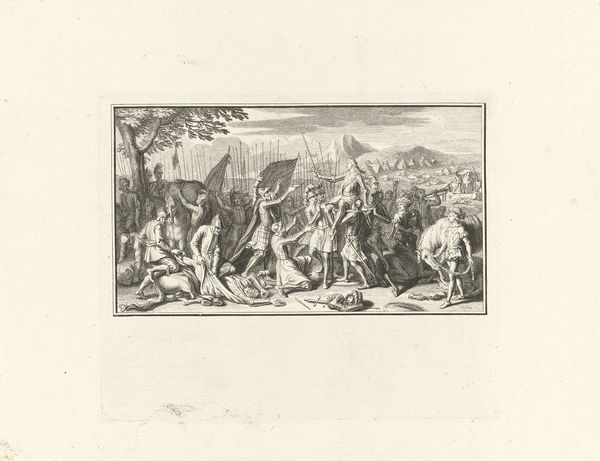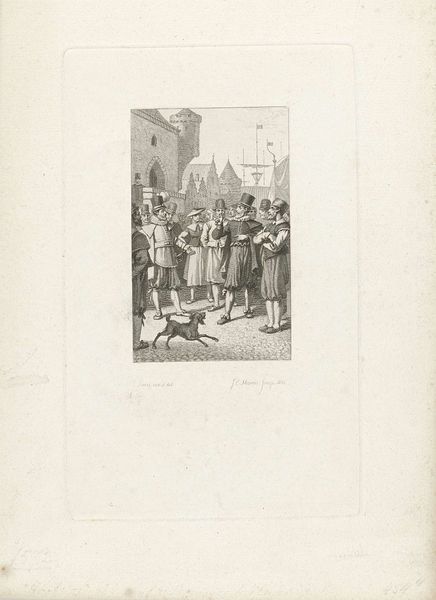
drawing, ink, pen, engraving
#
drawing
#
narrative-art
#
pen sketch
#
figuration
#
ink
#
romanticism
#
pen
#
history-painting
#
academic-art
#
engraving
Dimensions: height 315 mm, width 425 mm
Copyright: Rijks Museum: Open Domain
Bartolomeo Pinelli made this print of ‘Tarpeia gedood door Sabijnse soldaten’ – or ‘Tarpeia killed by Sabine soldiers’ - using etching, a printmaking process, sometime between 1781 and 1835. Pinelli would have coated a metal plate with a waxy, acid-resistant substance known as the ‘ground,’ before drawing his composition. He then submerged the plate in acid, which bit into the exposed lines, creating grooves. Ink was then applied to these recessed areas, and the image transferred to paper under high pressure. The linear quality of etching lends itself well to detailed, narrative scenes like this one, and it was a popular medium for creating multiples to be sold on the market. In this way, the print straddles both craft and industry, requiring artistic skill and technical knowledge, yet lends itself to mass production and distribution, much like any other commodity. Consider the labor involved: the artist, the publisher, the distributors, and the consumers of this widely disseminated image. That labor is materially embedded in the artwork.
Comments
No comments
Be the first to comment and join the conversation on the ultimate creative platform.
